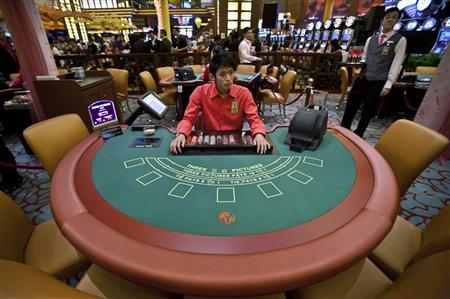Unveiling the Secret: Why Are Casino Card Tables Green?

Ever wondered why most casino card tables you see are covered in that distinctive shade of green? While it might feel like a random tradition, the color choice is anything but accidental. The deliberate selection of green for casino gaming surfaces is rooted in psychology, culture, and practical history, transforming the gaming experience and shaping how players feel at the tables.
The Meticulous Design Behind Casino Environments
When you walk onto a casino floor, every element around you has been strategically chosen. From the arrangement of the tables to the lighting and even ambient sounds, casinos are meticulously crafted to create a space that keeps players engaged and comfortable. Even features like the absence of windows and clocks, the specific layout, and complimentary drinks contribute to an immersive atmosphere. Within this carefully designed space, the color of the card tables may seem subtle, but it plays a crucial role in the overall casino experience.
The Science and Psychology of Green
The prevalence of green card tables isn't just a matter of tradition-it's based on color psychology. Green is commonly associated with tranquility, calmness, and relaxation. For players entering a potentially intense environment where money is at stake among strangers, fostering a sense of peace is important. By using green, casinos help create a more inviting setting that encourages players to stay longer and feel at ease, reducing stress and promoting a sense of balance.
Beyond relaxation, green occupies a unique place in the color spectrum-offering a harmonious balance between warm shades like red and yellow, and cooler tones such as blue and purple. This balance further enhances feelings of stability and comfort in the midst of the casino's excitement.
Green as a Symbol of Action and Permission
The color green is universally regarded as a symbol for "go" or permission, thanks to its association with traffic lights and crossings. By using this shade, casinos subconsciously signal to players that it’s safe to place bets, join in, and enjoy themselves. This quiet encouragement helps reduce hesitancy and anxiety, making it easier for everyone to participate-whether they're seasoned gamblers or newcomers stepping up to the felt for the first time.
Western Associations: Wealth and Prosperity
In Western culture, green has deep ties to money and abundance. Banknotes are predominantly green, and spreadsheets commonly use green to highlight profits. This creates a subtle connection between the casino table and the promise-or hope-of financial gain. Players subconsciously associate the green table felt with prosperity and opportunity, which is precisely the psychological state gaming establishments want at their tables. Conversely, in Eastern cultures, the color red is often linked to luck and wealth, highlighting how color symbolism is tailored to cultural expectations.
The Historical Origins: Baize and Tradition
The tradition of using green on gaming tables goes back centuries, largely thanks to the baize material originally found on billiard and snooker tables. Baize’s texture made it ideal for slowing balls and enhancing gameplay in cue sports, and it was dyed green to mimic the lush appearance of a lawn. Its adoption into the world of cards and poker offered smooth card slides for dealers and a familiar, authoritative look for casino settings.
Historical lore also suggests that green baize was useful during times when gambling was outlawed. During illegal card sessions, tables covered in baize could be quickly wiped clean of chalk scores, eliminating evidence of the games. Over time, this practicality combined with tradition and aesthetics to cement green as the default color.
The Modern Evolution of Colorful Table Design
While green remains the gold standard for card tables, a growing number of casinos are experimenting with other hues, such as blue and red, to give their spaces a modern twist. However, green maintains a classic place in casino culture-it's the color most people associate with gaming tables, and for many, a table that isn't green just doesn't feel the same.
The selection of green for casino card tables proves that every detail-from the lights above to the color beneath your chips-is chosen with intention. Whether for psychology, tradition, practicality, or the promise of prosperity, the green table remains an iconic symbol in the world of gambling.













